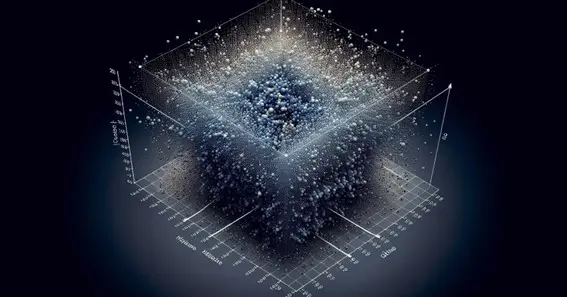What is a PCA? PCA is to diminish the dimensionality of a dataset with an enormous number of interrelated factors while safeguarding however much data as could be expected. High-layered information can be challenging to break down and envision, frequently prompting issues, for example, overfitting in AI models.
What is a PCA?
What is PCA? Principal component analysis (PCA) is a strong factual method utilized in the fields of information investigation, AI, and bioinformatics to improve complex datasets. By changing the information into another direction framework, PCA features the fundamental examples and designs in the information, making it simpler to decipher and picture.
Here in the preceding paragraph about what is a PCA readers will get thorough knowledge about the topic.
Why is PCA Significant?

PCA is significant in different fields considering multiple factors:
Data Visualization:
PCA empowers the representation of high-layered information in a few aspects, working with recognizable proof of examples, bunches, and exceptions.
Noise Reduction:
By zeroing in on the main parts that catch the most change, PCA can assist with lessening the effect of commotion and superfluous data in the information.
Feature Extraction:
In AI, PCA can be utilized to make new highlights that sum up the first information, working on the presentation of calculations.
How PCA Functions?

PCA changes the first information into another arrangement of uncorrelated factors called head parts. These parts are requested with the end goal that the initial not many hold much of the variety present in the first dataset. The means engaged with performing PCA are as per the following:
Standardization:
The initial step is to normalize the information, guaranteeing that every variable has a mean of nothing and a standard deviation of one. This is essential because PCA is delicate to the differences of the first factors.
Covariance Network Computation:
Then, the covariance network of the normalized information is processed to comprehend how the factors are related to one another. The covariance lattice is a square grid that shows the covariance between sets of factors.
Conclusion
Principal component analysis (PCA) is a fundamental apparatus in the munitions stockpile of information researchers and experts. By diminishing the dimensionality of complex datasets, PCA works on the examination, representation, and translation of information, making it more available and noteworthy.
FAQ
What is Principal Component Analysis (PCA)?
Math-based Principal Component Analysis (PCA) reduces variables. It separates data into unrelated sections.
What is PCA and how does it analyze data?
PCA reduces factors, making data easier to comprehend. Find the most important elements that explain most of the changes to see how the data is structured
When to utilize PCA?
PCA helps simplify huge datasets with numerous related elements. This is useful for removing noise or detecting trends in data. PCA may also improve and speed up machine learning systems.
What’s wrong with PCA?
PCA requires elements to be linked in a straight line, hence it may not display complicated or non-linear connections.
PCA typically requires data scaling. How do you identify major parts?
Find the data’s correlation matrix’s eigenvectors and eigenvalues first. Eigenvalues and eigenvectors exhibit variation and direction. Data is then added to these important elements to create a fewer-sided image.
Sources:
https://www.geeksforgeeks.org/principal-component-analysis-pca










